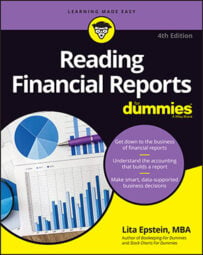The first note in almost every company's financial report gives you the ammunition you need to understand the accounting policies used to develop the financial statements. This note explains the accounting rules the company used to develop its numbers. The note is usually called the “Summary of significant accounting policies.” Issues discussed in this note include:
Asset types: The types of things the company owns.
Method of valuation: How the company values its assets.
Methods of depreciation and amortization: The methods the firm uses to show the use of its assets.
How revenue and expenses are recognized: How the company records the money it takes in from sales and the money it pays out to cover its expenses.
Pensions: The obligations the business has to its current and future retirees.
Risk management: What the company does to minimize its risk.
Stock-based compensation: Employee incentive plans involving stock ownership.
Income taxes: The company's income tax obligations and the amount the company paid in taxes.
Carefully read the summary of significant accounting policies. If you don't understand a policy, research it further so you can make a judgment about how this policy may impact the company's financial position. You can either research the issue yourself on the Internet or call the company's investor relations office to ask questions.
Also, compare policies among the companies you're analyzing. You want to see whether the differences in the ways companies handle the valuation of assets or the recognition of revenues and expenses make it more difficult for you to analyze and compare the results.
For example, if companies use different methods to value their inventory, this can have a major impact on net income. Many times, you don't actually have enough details to make apples-to-apples comparisons of two firms that use different accounting policies, but you need to be aware that the policies differ as you analyze the companies’ financial results, and be aware that you may be comparing apples to oranges.
Depreciation
One significant difference in accounting policies that can affect the bottom line is the amount of time a company allows for the depreciation of assets. One company may use a 15- to 25-year time frame, and another may use a 10- to 40-year span.
The time frame used for depreciation directly impacts the value of the assets, which is recorded on the line item of the balance sheet called Cost less accumulated depreciation. A faster depreciation method reduces the value of these assets more quickly.
Depreciation expenses are also deducted from general revenue. A company that writes off its buildings quickly — say, in 25 years rather than up to 40 years — has higher depreciation expenses and lower net income than a company that takes longer to write off its buildings.
Revenue
You can find some noteworthy differences between companies by reading the revenue recognition section of the summary of significant accounting policies. Differences regarding the timing of revenue recognition can impact the total revenues reported.
For example, one company may recognize revenue when a product ships to the customer. Another company may recognize revenue when the customer receives the product. If products are shipped at the end of the month, a company that includes shipped products may include the revenue in that month, but a company that recognizes revenue only when products are received may not include the revenue until the next month.
Other revenue-recognition differences to pay attention to include the following:
Sales price: Some companies sell products with a fixed sales price, but others indicate that prices aren't fixed and are determined between the company and the customer.
Collectibility: Some companies may indicate that whether they report income depends on whether all the revenue is likely to be collected. Successful collection can depend on the business environment, a customer's financial condition, historical collection experience, accounts receivable aging, and customer disputes. If collectibility is uncertain, the revenue isn't reported.
Expenses
Expenses differ widely among companies. As you read this part of the accounting policies note, be sure to notice the types of expenses the company chooses to highlight. Sometimes the differences between companies can give you insight into how the companies operate. Here are two key areas where you may see differences in how a company reports expenses:
Product development: Some companies develop all their products in-house, whereas others pay royalties to inventors, designers, and others to develop and market new products. In-house product development is reported as research and development expenses.
If the company develops new products primarily by using outside sources, these expenses are in a line item for royalty expenses.
Advertising: Some companies indicate that all advertising is expensed at the time the advertising is printed or aired. Others may write off advertising over a longer period of time. Companies that depend on catalog sales typically spread out their ad expenses over several months or even a year if they can prove that sales continued to come in during that longer period of time.
As you compare two firms’ financial reports, look for both the similarities and differences in their accounting policies. You may need to make some assumptions regarding the financial statements, to compare apples to apples when trying to decide which company is the better investment. For example, if the companies depreciate assets differently, you must remember that their asset valuations aren't the same, nor are their depreciation expenses.

